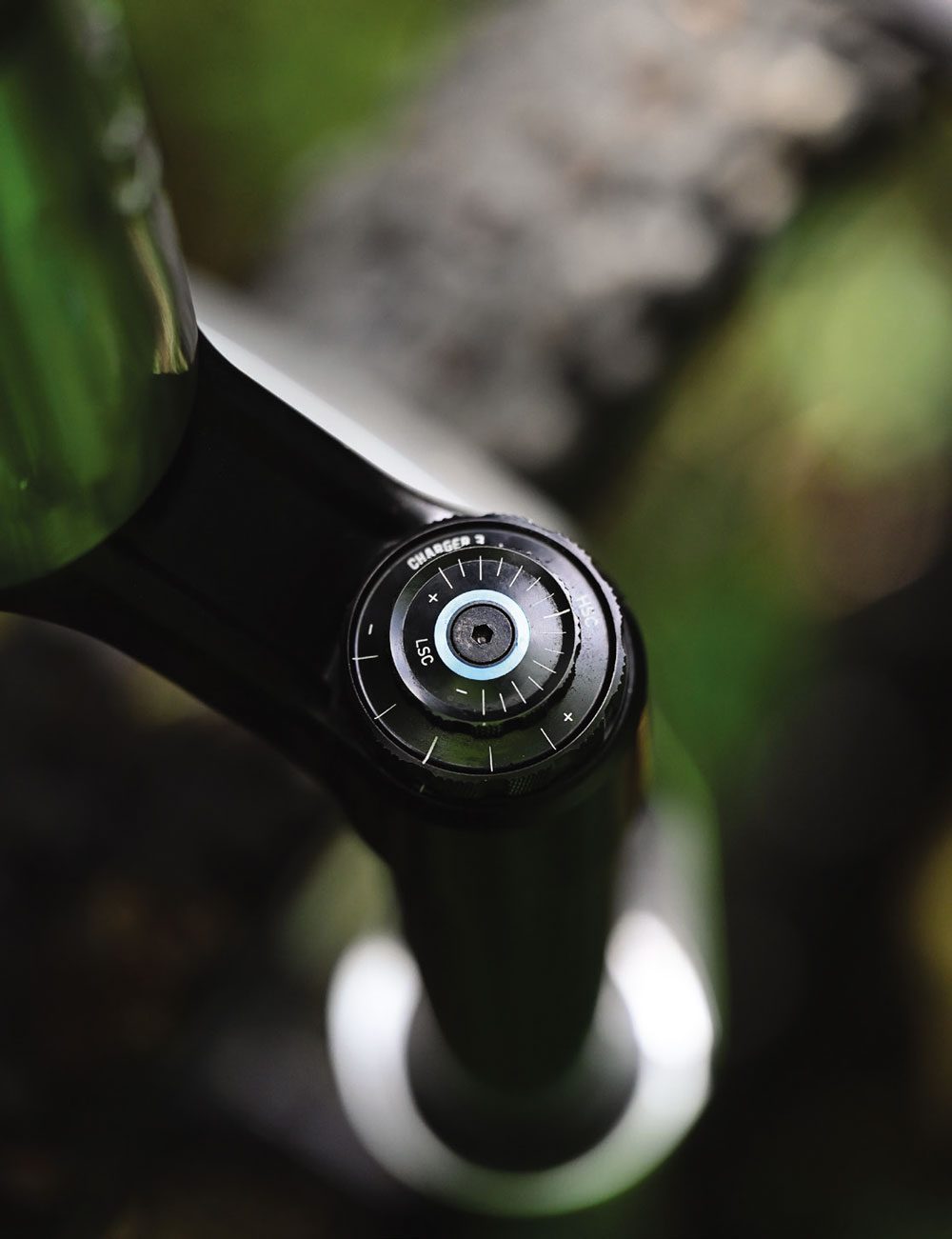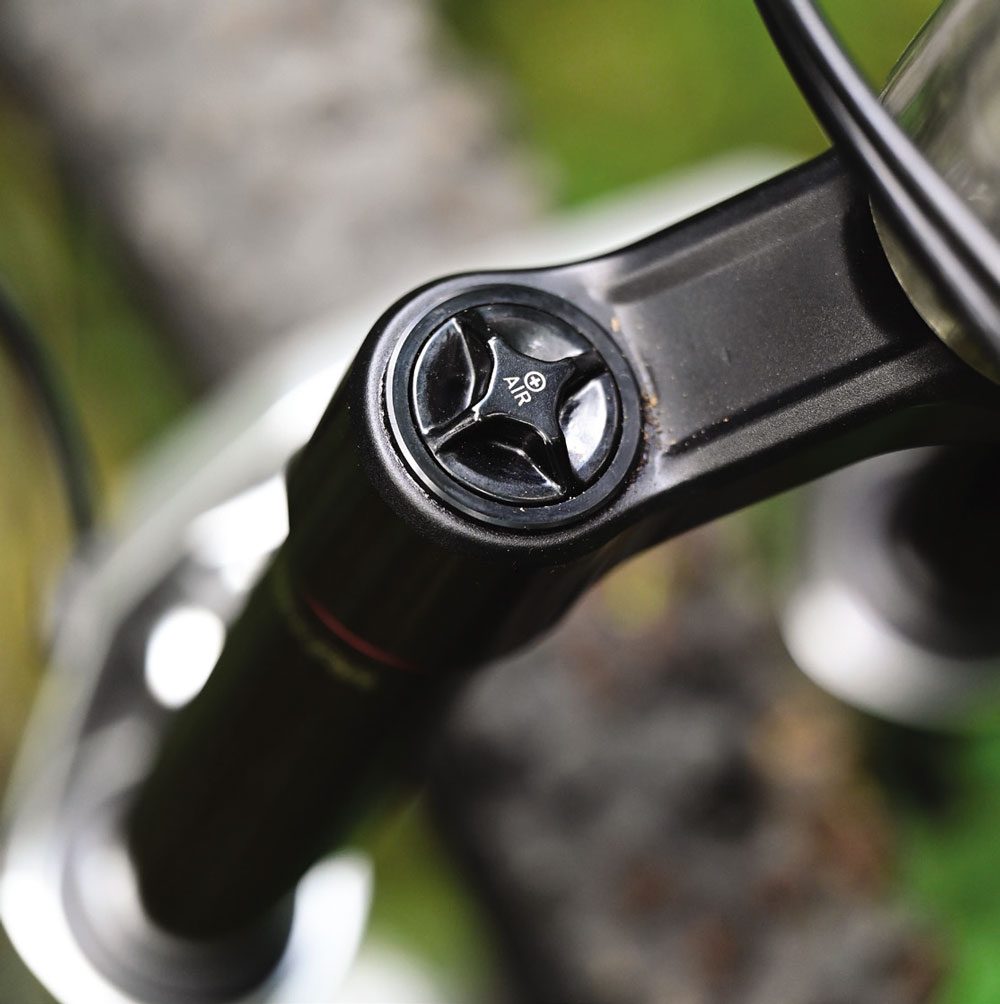“We have been lucky enough to get our hands on the brand spanking 140mm Pike Ultimate and will be putting it through its paces throughout the year.”
Earlier this year, RockShox rolled out a major update of their range with an all-new Zeb, Lyrik and Pike, not to mention a bevy of new rear shocks. We have been lucky enough to get our hands on the brand spanking 140mm Pike Ultimate and will be putting it through its paces throughout the year. First though, the Pike was already a fantastic fork, so what have the SRAM engineers been tinkering with to make it even better?
For starters, one look at it and you can tell this is more than just tinkering, this is an all-new fork. The chassis and arch, in particular, look markedly different to earlier models, but the changes are worked throughout; starting from a blank canvas has meant that engineers have been able to make a unified approach to integrating all the best new ideas they had at one time. On the outside, you’ll see a new crown, upper tubes and lower legs and pressure relief valves on the rear, but the insides are all new too.

Previous Pikes spanned a wide travel range, but this has now been narrowed down to focus specifically on the 120-140mm travel range —smack bang in the middle of what SRAM see as the trail bike market. If you want more travel, you’ll have to go for the Lyrik; less travel, you’ll be on the Sid. This tighter range of travel means that SRAM engineers have been able to narrow the parameters of what they are working with and therefore optimise around that. The result, lower weight in some areas, and better torsional rigidity, meaning they are less likely to twist under braking load and navigating off camber terrain. Forks that don’t twist are free to move through their travel, so that rigidity creates a consistent, supple fork, even under the toughest conditions.
The new Charger 3 damper has been designed from the ground up and features a new spring backed, IFP cartridge damper. Fully sealed and self-contained, this new damper is designed to offer riders a much more consistent feel throughout the stroke, and an increased ability for riders to easily tune the ride to suit their riding style and preferences. The result? Totally independent High-Speed Compression (HSC) and Low Speed Compression (LSC) adjustments, and no “cross-talk” between the two.
On top, you’ll find new adjusters with a new twin dial layout, also with handy visual indicators so you can see at a glance where you are on the adjustment scale. They feature noticeably clearer indents between each setting too. Inside the forks, the bushing design is brand new too — these feature longer bushings now, which actually reduce the overall friction in the system.

On the other side is the new Debonair+ air spring, again, tailored to the specific needs of a fork in the 120-140mm range. The shaft is now an all-aluminum piston instead of plastic, there are improved glide rings, and a tweaking of the volume in the positive and negative air chambers. So, what’s the end result of all of this? RockShox believe the new Pike can initiate travel easier and that it will feel plusher off-the-top, while still having great mid-stroke support. It also means a higher ride height; it won’t dive through its travel under braking which means that you’ll be able to utilise every millimeter of travel when things start to get rowdy.
In terms of weight, ours weighed in at 1.90 kg with a 190mm steerer. That’s comparable with the previous generation, but the fact that they have managed to get 13.5% more torsional stiffness inside the same overall weight is pretty cool.
The final new idea that engineers worked in was the addition of what they call Buttercups. What are Buttercups, you say? Well, first, let’s talk about what they are trying to address. Ever felt like your hands have been battered after buzzing through a section of ripples on a fire road? Those are high-frequency, low amplitude vibrations. RockShox call it ‘trail chatter’ — those fast, small vibrations that ‘vibrate your eyeballs’ so to speak. As fancy as they are, fork dampers aren’t really designed with this specific example in mind; dampers are designed to absorb impacts, vibration-like trail chatter can often make its way past the damper without really activating it, up the fork, and into your hands.” Ok, so that’s what they are working to resolve — but what exactly are they? Buttercups live on both the damper and air spring shafts of Ultimate-level forks. Inside their gold packaging, Buttercups utilize rubber pucks and a metal plate to absorb frequencies that would otherwise travel up to the rider. These little Buttercups add about 4mm of vertical compliance to your suspension and RockShox believe they achieve an average of 20% reduction in vibrations from reaching your hands. Impressive!
Having owned the previous Pike, and a Fox Factory 34 (albeit the previous generation), I was eager to see just how the new Pike had improved over its previous version, and also over its nearest competition that had recently been upgraded.


Setting it up on my Banshee Phantom down-country bike, I was immediately impressed with the new look. The whole chassis has a modern, muscular look about it… and the silver was a great match too, which didn’t hurt. Straight away, I could tell that these were going to be a vast improvement over my previous Pikes in terms of small bump absorption — these things were smooth and would initiate into their travel with almost no force. The amount of stiction that is needed to be overcome to get the stanchions moving was almost non-existent. The first trail I rode, I could tell that these were indeed a whole new kettle of fish compared to the previous version.
The biggest realisation was how the first 30-40mm of travel seems to be noticeably more active. Whereas I was previously reasonably happy with my old Pikes (yes, regularly serviced) these new ones made the old ones feel, well… let’s just say, they’re not around anymore. Fast forward a few rides and the next thing I started to notice was how much more regularly I was using all the travel. I’d look down at the travel indicator O-ring and see that I had used all the travel, however, while riding I never noticed feeling like I’d bottomed out. They seem to have also improved the feel of the curve as you move towards the end of the travel to make it feel like you never really hit bottom.
This is just a ‘first impressions’ review but we are looking forward to putting some serious miles on these throughout summer and seeing how they hold up over the long haul, as we test them through a variety of conditions and have time to fully experiment with the various tuning options on offer.
REVIEW: LANCE PILBROW
DISTRIBUTOR: WORRALLS

